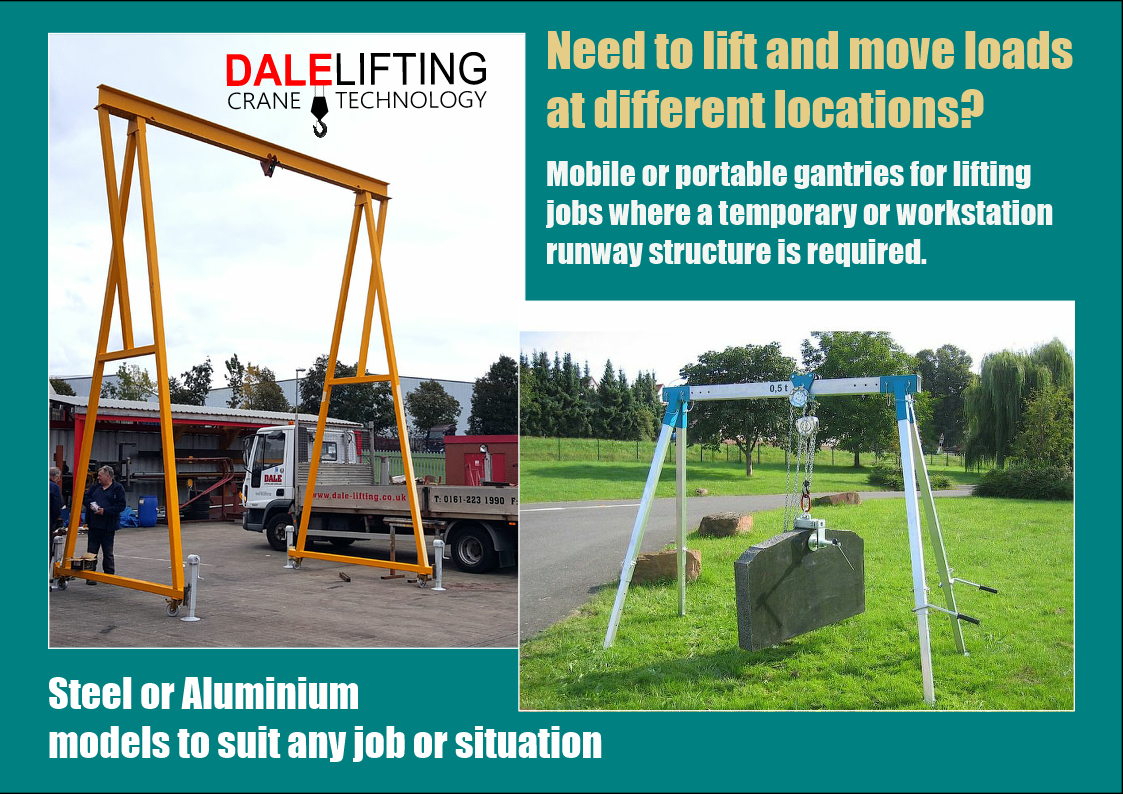Mobile gantries are widely used in industry with manual or powered hoists for lifting jobs where a temporary or workstation runway structure is required.
Mobile gantries are free-standing structures that consist of a runway beam and two supports assembled in a goalpost-like configuration. They are usually mounted on wheels or castors to enable the structure to be relocated by manpower only, but they may also be mounted on free-standing feet requiring the structure to be dismantled for transportation. Some models can be adjusted for height and or span to suit the location and specific task on varying sites.
DLH online offer a comprehensive range of portable/mobile gantries that can be easily manoeuvred around your workspace or jobsite and can be easily disassembled and reassembled as and when needed. The range includes modular steel and aluminium mobile gantries, aluminium portable gantries with feet, or we can design bespoke steel or aluminium static or portable gantries to your exact requirements - Contact our design team on 0161 223 1990 or email sales@dale-lifting.co.uk for details
Download Mobile and Portale Gantries Product Guide
What are the advantages of mobile gantries?
Mobile gantries have several advantages over other types of lifting equipment. Some of the benefits are:
Portability: Mobile gantries are free-standing structures that can easily move around your workspace. They are usually mounted on wheels or castors, which makes them easy to manoeuvre by manpower only.
Flexibility: Mobile gantries can be easily disassembled and reassembled as needed. This makes them ideal for use in temporary workspaces or for applications where space is at a premium.
Ease of use: Mobile gantries are simple to operate and require minimal training. They can lift various loads, from small components to large machinery.
Cost-effective: Mobile gantries are a cost-effective alternative to permanent overhead cranes. They are also more versatile than other lifting equipment, so you can use them for a wider range of applications.

